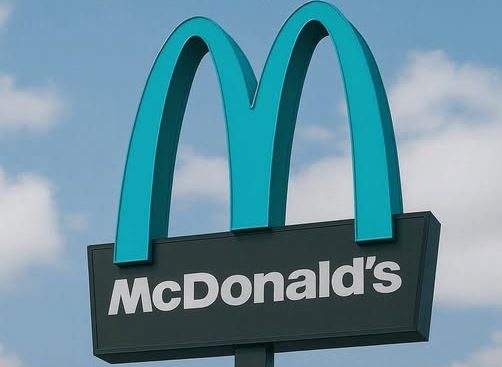Driving through the open desert around Sedona, Arizona, the landscape speaks for itself. Towering red rock formations shift with the light throughout the day, creating an atmosphere many describe as spiritual. Sedona is unlike anywhere else in the country, and that’s intentional. The city enforces strict building rules to protect its environment, preventing anything that might disrupt the natural beauty. One unexpected result? Sedona is home to a McDonald’s with turquoise arches.
Everyone recognizes the golden arches. They’re bright, unmistakable, a global symbol. You could spot them from a mile away in a foreign airport. But in Sedona, those golden arches wouldn’t do. When McDonald’s planned a new location in 1993, city officials immediately rejected the traditional gold, worried it would clash with the red cliffs. Sedona’s philosophy is simple: nothing should compete visually with the landscape. Neon signs, reflective surfaces, bright colors — all were off-limits.
After negotiations, a compromise was reached: turquoise arches. The color wasn’t arbitrary. It reflects Southwestern art, jewelry, and architecture, harmonizing with the desert tones. This change wasn’t about marketing or going viral decades before social media — it was about respecting the surroundings. McDonald’s agreed without resistance, adapting instead of fighting.
The result? An accidental landmark. The turquoise arches became a curiosity for travelers, joining Sedona’s unofficial tour spots like the Chapel of the Holy Cross and Airport Mesa. Photos, blogs, and travel magazines helped the location gain recognition far beyond Arizona. What started as a practical concession became a symbol of how global brands can adjust to local culture without losing identity. McDonald’s maintained its recognizability while embracing flexibility.
The building itself follows the same logic: muted, subtle, painted in desert tones that blend into the environment rather than dominate it. The arches glow differently depending on the sun’s angle, sometimes appearing almost as part of the sky. Sedona continues to enforce these design restrictions, protecting its scenery and drawing visitors who value the untouched beauty. The turquoise arches fit seamlessly into this philosophy.
Today, Sedona’s McDonald’s is more than a place to grab food. It’s a story about the balance between global brands and local culture. Tourists photograph it like a landmark; guides mention it as an unusual stop. The arches show that small design choices, made thoughtfully, can elevate something ordinary into something memorable. Sedona didn’t compromise its standards, and McDonald’s didn’t lose its identity — together, they created a location that feels both universal and uniquely local.
In the end, the turquoise arches are more than a corporate logo. They reflect Sedona’s character: distinctive, protective of its environment, and willing to stand apart from the norm. They remind visitors that respecting a place can turn even a fast-food sign into a piece of local history.
